
What is carbon capture?
Carbon dioxide (CO2) emissions generated by human activities have led to an accumulation of greenhouse gases in the atmosphere that is causing an increase in
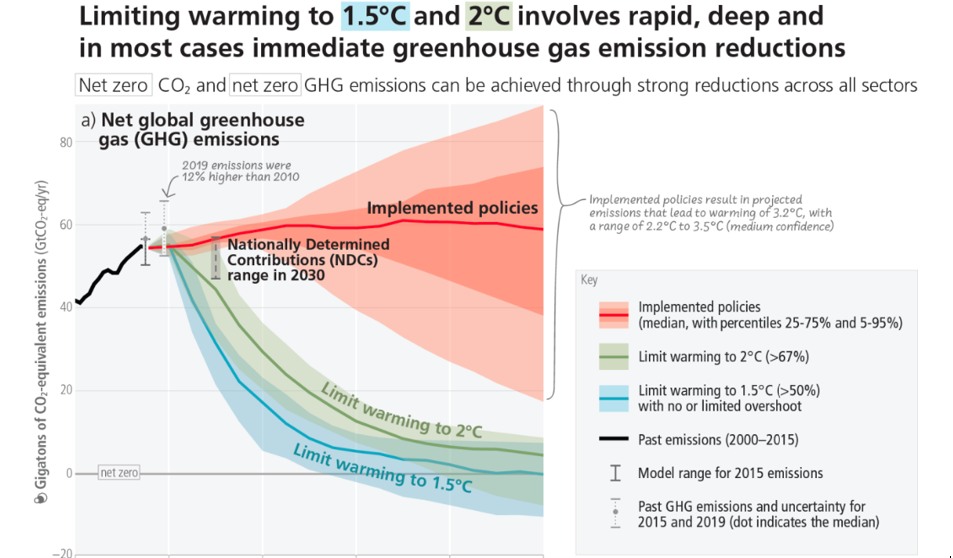
After several months of waiting, the synthesis of the latest IPCC (Intergovernmental Panel on Climate Change) report has been published. This report synthesizes all the climate science research carried out over the last 8 years. It summarizes the current state of knowledge about climate change, as well as its impacts, risks, and mitigation and adaptation strategies.
In this article we will tell you:
To understand how this report was elaborated, one must know what the IPCC is and how it works. Here are some key facts so that you can learn a bit more about this organization:
The work of IPCC scientists is divided into three main groups:
With this information about the IPCC, we can now move on to the synthesis of the latest IPCC report. This synthesis was made on the basis of the three reports submitted by each of the working groups (1,2 and 3) in 2022.
In 2022, three reports were presented with the most updated data for each of the topics addressed by the working groups.
Then, the synthesis of the last IPCC report presented in 2023 is a summary of the critical climate science issues, and the adaptation and mitigation actions needed to combat the crisis that currently faces our planet.
The synthesis of the latest IPCC report is structured in three chapters:
The following are the most important findings presented in each of the chapters of the synthesis of the latest IPCC report.
This section of the report shows the current state of the global climate situation according to the latest scientific research. Some of the most relevant data are:
Global temperature and GHG emissions.
Another fact mentioned in this section is that the emissions reductions due to mitigation actions have been less than the increase in emissions due to the growth of industrial activities, energy use, and transportation, among others.
Climate catastrophes
On the other hand, it is also mentioned that deaths due to climate catastrophes between 2010 and 2020 have been 15 times higher in vulnerable regions than in low vulnerability regions. At the same time, almost half of the world’s population is currently experiencing water shortages.
International emission reduction commitments
Finally, they discuss how emission reduction commitments relate to the objectives set out in the Paris Agreement. It is mentioned that, according to the Nationally Determined Contributions (NDCs), the probability that by 2030 the global temperature will increase by 1.5°C is 50%. In the event that the NDCs do not increase their ambition in the coming years, it is estimated that the temperature by 2100 will increase by 2.8°C.

This section discusses the risks of postponing the necessary measures to mitigate the causes that generate climate change. Some data to highlight:
Sea level rise
Sea level rise will be inevitable in the coming decades due to the warming that will occur as a result of the existing concentration of CO2 in the atmosphere. This phenomenon is caused by the melting of the poles, glaciers, and the increase in ocean temperatures (which expands at a higher temperature).
It is estimated that in the next 2000 years, the sea level will rise by 2 to 3 meters if we limit the Earth’s temperature by 1.5°C with respect to pre-industrial levels. If this limit is 2°C, the increase will be 2-6 meters.
Adaptation measures
The effectiveness of adaptation measures, including nature-based solutions, will decrease as global warming increases. Above 1.5°C, some marine corals, wetlands, and polar ecosystems will surpass their adaptive capacity and thus nature-based solutions will not be as effective.
Direct carbon sequestration (CDR)
In order to achieve the net zero targets set out in international agreements, it will be necessary to combine GHG emission mitigation strategies with CO2 capture methods.
This section lists the tools that both the public, private and civil society sectors must use to mitigate and adapt to the global situation in the coming decades.
The evidence shows that global resilient development actions are much more urgent than was thought in the AR5 report (the report prior to this one, published in 2014). Resilient climate development is achieved when governments, civil society and the private sector make inclusive decisions that prioritize risk reduction, equity and justice.
Another fact mentioned is that climate actions can have associated co-benefits. These include: reduced air pollution, and health benefits from choosing more sustainable forms of transportation (cycling, walking) and healthier, more sustainable dietary choices.
Finally, mitigation actions that aim to reduce air pollution levels can have economic benefits of equal magnitude to the costs of implementing these measures in the first instance.
According to the IPCC, the global climate situation is critical. However, there is hope. Much of this synthesis of the latest IPCC summary shows that by taking immediate action we can partially reverse the effects of global warming in as little as two decades.
This requires immense efforts, but above all a great commitment from the society, governments and the private sector. Technological development is a key factor in making sustainable options for energy production, transportation and food increasingly accessible in the coming years.
But we also need a cultural change in which we recognize that we are part of a society that is in danger. In this way, we will be able to commit ourselves to this cause that undoubtedly affects each and every one of us.

Carbon dioxide (CO2) emissions generated by human activities have led to an accumulation of greenhouse gases in the atmosphere that is causing an increase in
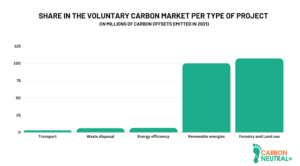
According to the Emissions Gap Report 2022, the growth rate of global greenhouse gas (GHG) emissions has declined over the last decade. Between 2010 and
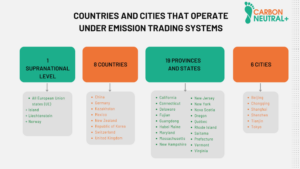
As international agreements related to corporate greenhouse gas emissions (GHG) come into force, the regulations associated with the generation of these emissions increase. This is
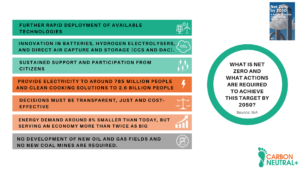
Climate change is one of the greatest concerns of our time. This phenomenon is generating consequences that are difficult to reverse, such as an increase

The Paris Agreement is an international agreement adopted on December 12, 2015 during the United Nations Climate Change Conference (COP21) in Paris, France. One of
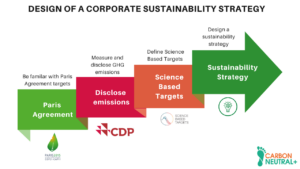
As the world faces the looming effects of climate change, more and more companies are recognizing the importance of adopting sustainable strategies that aim to
| Cookie | Duration | Description |
|---|---|---|
| cookielawinfo-checkbox-analytics | 11 months | This cookie is set by GDPR Cookie Consent plugin. The cookie is used to store the user consent for the cookies in the category "Analytics". |
| cookielawinfo-checkbox-functional | 11 months | The cookie is set by GDPR cookie consent to record the user consent for the cookies in the category "Functional". |
| cookielawinfo-checkbox-necessary | 11 months | This cookie is set by GDPR Cookie Consent plugin. The cookies is used to store the user consent for the cookies in the category "Necessary". |
| cookielawinfo-checkbox-others | 11 months | This cookie is set by GDPR Cookie Consent plugin. The cookie is used to store the user consent for the cookies in the category "Other. |
| cookielawinfo-checkbox-performance | 11 months | This cookie is set by GDPR Cookie Consent plugin. The cookie is used to store the user consent for the cookies in the category "Performance". |
| viewed_cookie_policy | 11 months | The cookie is set by the GDPR Cookie Consent plugin and is used to store whether or not user has consented to the use of cookies. It does not store any personal data. |